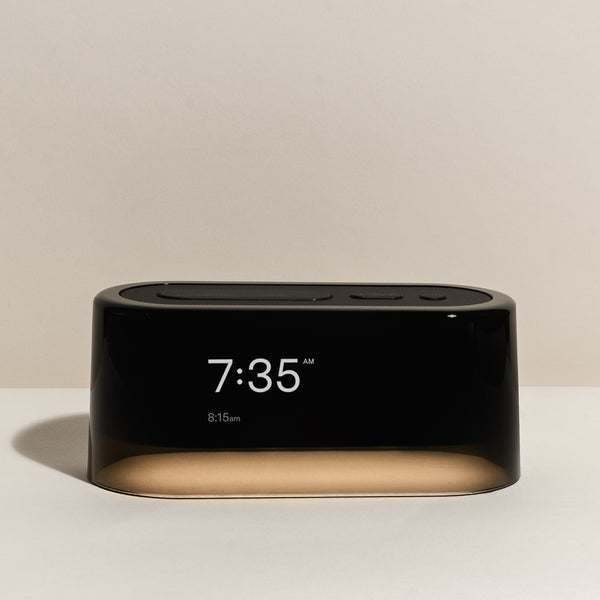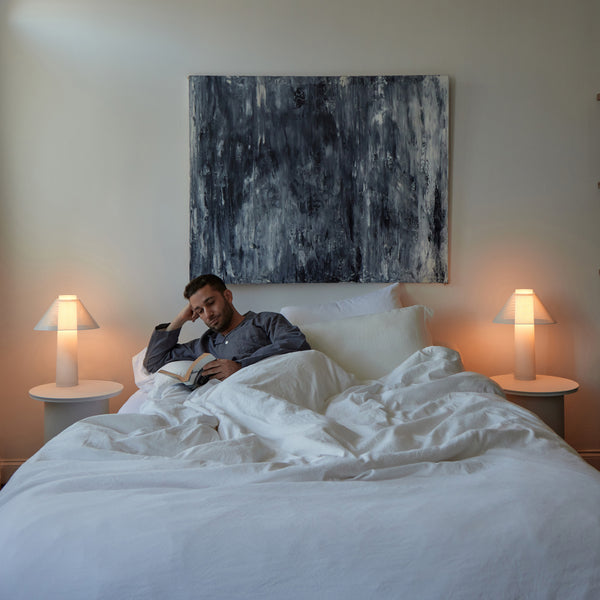Ensuring a good night of sleep can happen before we even hit the pillow. It might seem like the quality of our sleep is out of our control, but there are some ways you can proactively set yourself up for a good night of sleep. Learning how to sleep starts with assessing your current habits that might be getting in your way. Below are five tips to set set you up for consistent sleep success. We cover everything from day and nighttime routines, to finding your perfect lighting and posture.
Keep in line with your natural sleep-wake cycle
How to get better sleep starts with getting in sync with your body’s natural timekeeping system. Each of us has a circadian rhythm, our internal clock that tells us when it’s time to sleep and wake. By definition, circadian means about a day, this regulates the various systems that dictate our natural sleep-wake cycle over the course of about 24 hours.
Establishing a consistent sleep schedule and sticking to it will help your body adapt. This means weekends too. While it may sound counterintuitive, keeping your sleep routine has a bigger benefit in the long term for falling asleep easier and getting better quality sleep over time.
Ideally, you should feel fully rested when you wake up, but if you're still feeling tired in the morning after a full night of rest it might be time to try bumping up your bedtime. Too early and you run the risk of waking up in the middle of the night. Light plays the largest role in setting a circadian clock so getting bright natural light in the morning and throughout the day will keep you feeling alert and your hormones in balance.
Control your light exposure
Light is one of the biggest disruptors of sleep because of its effect on our hormones. We have various hormones that play different roles in regulating our sleep-wake cycle and circadian rhythm. A hormone called melatonin is one that typically gets elevated at night when it’s dark out then lowers as it gets closer to morning. This natural shift is one of many signals to the brain that it's time to sleep and time to wake up. However, if we expose ourselves to bright light before bedtime we can offset this process.
These tips can support your natural sleep cycle so you know how to fall asleep easier and stay energized during the day:
Start with a natural wake-up call: Getting between 30 and 45 minutes of direct sunlight within the first hour of waking can increase serotonin levels. Serotonin is a hormone that regulates our mood and is a precursor to melatonin for restorative sleep. Filtered sunlight may not have the same effect as direct natural sunlight.
Set the mood for sleep: The no-devices before bed advice isn’t just because of the negative effects of blue light exposure. Suspenseful shows or even endless TikTok scrolling can be too stimulating before bed and have the opposite effect of relaxation. Try listening to a soothing playlist or reading a book is a much better bet.
Get the right night light: Bright light can suppress melatonin production which naturally increases at nighttime. Keep surroundings dimly lit 1-2 hours before bed. Support the natural signals of your sleep-wake cycle with gradual lighting like the Loftie Lamp or filter out bright light anytime with a sleep mask.
Wind down before bed
Sometimes, no matter how tired we are at the end of the day, we still struggle to shut off the inner chatter. According to the Anxiety and Depression Association of America, 40 million Americans report struggling with a form of anxiety every year. Experts suggest that anxiety at night is often connected to sleep disturbances like insomnia. Some relaxation tips and things to help you sleep are soothing activities before bed like a warm bath or shower, a hot cup of caffeine-free tea, or winding down with an audiobook. Try turning off phone notifications to keep distractions to a minimum at bedtime.
Check on your sleep environment
Assessing the bedroom can be a quick remedy for how to sleep better. Create a cozy oasis that appeals to all of your senses to help you feel relaxed. Keep it simple with comfortable bedding and dim lighting. Additional comforts like weighted blankets and maintaining a cool room temperature of 65 degrees fahrenheit can help. Adding this kind of cooling effect can help you naturally produce melatonin to help you fall asleep faster. If you sleep in a city or have loud surrounding, try masking the noise with a soothing sound machine. The Loftie Clock has a variety of calming settings with sounds, breathing practices, and meditations to support you.
Adopt a Comfortable Sleeping Position
Sleeping positions will be different for everyone and each has their pros and cons. These are some of the most popular and how you can create the most supportive sleep position:
Side Sleepers: According to a 2017 study published in the Nature and Science of Sleep journal, more than 60% of people choose to sleep on their sides. This sleeping position can improve gut health and digestion, hinder snoring, and pregnant women can improve blood flow to the fetus and the uterus when on their left side. Some may experience shoulder pain over time as well as the possibility of facial wrinkles on one side.
Back Sleepers: Also referred to as ‘supine’ or the ‘soldier’ position, this can offer your neck and back better alignment than other positions as well as a more even weight distribution. It may also offer support for circulation and those suffering with nasal congestion. However, those who are older or overweight might be more susceptible to sleep apnea in this position as it can narrow the throat.
Stomach Sleepers: Also known as “prone” position, this is a position that offers the least support for alignment. Over time, this can leave you with a stiff neck and headaches. However if this is your preferred sleeping position, it’s best done with a pillow placed under the pelvis to reduce pressure on the spine and ensure you have a firm mattress.
Ultimately, the best way to sleep is the one that keeps your spine fully aligned. Sleeping positions should offer support from your hips to your head, so finding the most comfortable one that offers you the most support is best.





















